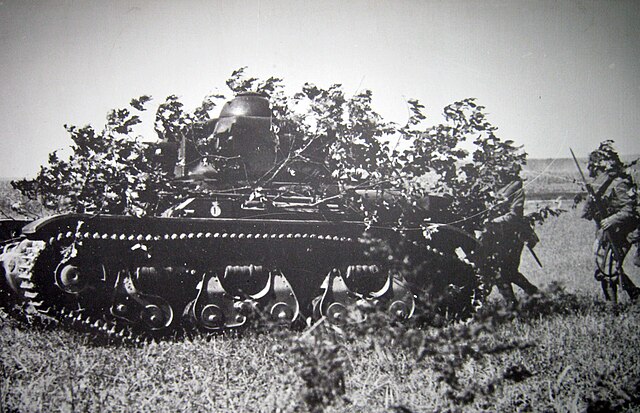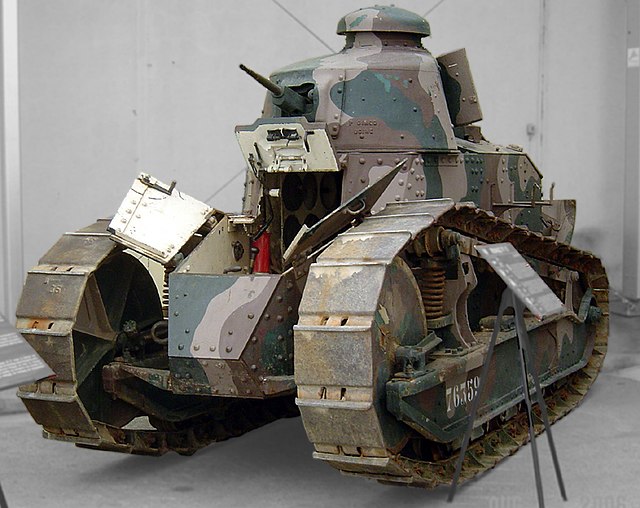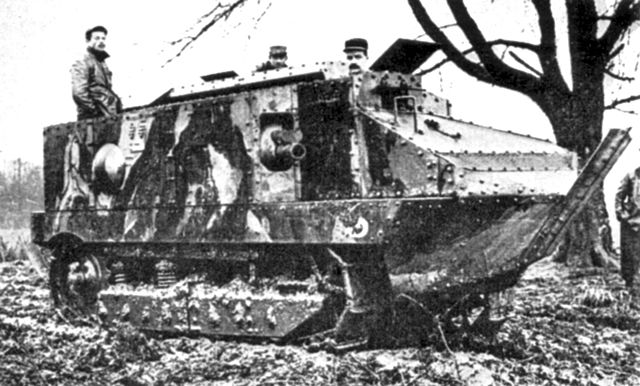The Renault R35, an abbreviation of Char léger Modèle 1935 R or R 35, was a French light infantry tank of the Second World War.
R 35 in the Yad La-Shiryon museum
The VDC R35 tank destroyer's prototype, with enlargened turret and 45 mm gun
Renault R35: the hatch at the back of the turret is clearly visible
R35 tank participating in large military manoeuvres of the Yugoslav Army at Torlak, 1940
French development into tanks began during World War I as an effort to overcome the stalemate of trench warfare, and largely at the initiative of the manufacturers. The Schneider CA1 was the first tank produced by France, and 400 units were built. The French also experimented with various tank designs, such as the Frot-Laffly landship, Boirault machine and Souain experiment. Another 400 Saint-Chamond tanks were manufactured from April 1917 to July 1918 but they were underpowered and were of limited utility because the caterpillar tracks were too short for the tank's length and weight. The most significant French tank development during the war was the Renault FT light tank, which set the general layout for future tank designs and was used or redesigned by various military forces, including those of the United States.
The Renault FT, the first "modern" tank to enter production
Schneider CA1, the first French tank
French Saint-Chamond tanks had long bodies with a lot of the vehicle projecting forward off of the short caterpillar tracks, making them more liable to get ditched in trenches.
Renault FT tanks being operated by the US Army in France. Light tanks with a crew of only two, these were mass-produced during World War I.








